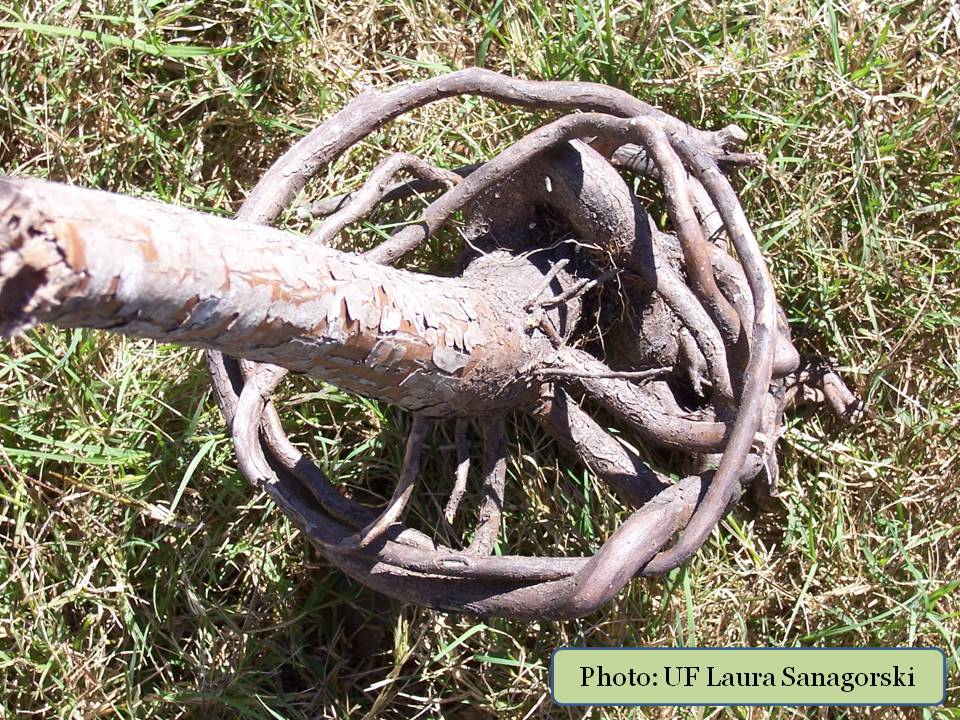Ask an Expert
Question from Kerstin Jones, Master Gardner, Salt Lake County, UT (received 2/27/20) -
I work at a small nursery in West Jordan that has traditionally specialized in hanging pots and premium annuals. Last year they decided to venture into landscaping stock as well and brought in an assortment of trees and shrubs, some of which have overwintered on the lot.
When surveying the stock yesterday we noticed many of the trees are severely rootbound in their pots. My employer asked if I would reach out to someone at extension and ask for some information regarding the process of resizing rootbound stock into larger pots. We recently lost our greenhouse manager and have yet to replace her, thus we are left without someone with this type of expertise.
I am familiar with the process advocated by some extensions (CSU in particular) to cut back the entire circumference of the rootball an inch or so with a sharp spade or saw in order to treat circling roots before planting rootbound trees, but I'm wondering how well those trees would survive if they were put in a larger pot rather than planted right away. Some of the trees also have girdling roots as large as 1.5 inches in diameter. Can those be cut off without losing the tree?
Thank you for your time and help. It is much appreciated,
Kerstin Jones
 Photo courtesy of Palm Beach County Extension and UF Laura Sanagorski
Photo courtesy of Palm Beach County Extension and UF Laura Sanagorski
Answer from Dr. Mike Kuhns, USU Extension Forester and Professor (sent 3/09/20) -
Kerstin,
Normal practice in dealing with potted trees that have been too long in the pot is simply to repot them in a bigger pot. This will make the resulting plants even more likely to have trunk-girdling roots later in life since there will be circling roots where the first pot was located and a second zone of circling roots that will develop at the second pot. It is not that apparently healthy trees with hidden deformed and defective root systems can’t be grown and sold to unsuspecting customers, and they may even do well after planting for up to 5 or more years. But eventually, when the tree’s trunk grows enough in diameter that it meets the first (or second) zone of circling roots which themselves are growing in diameter, then the circling roots become girdling roots and the tree starts to decline with no apparent reason.
The best thing to do is to sell the plants before they get root bound in the first pot, though you did not say what form the owner bought the trees in – are they bare root liners that are planted in pots or are they already potted? Either way, though, they need to be sold before they get root-bound in the first pot. Of course another way to grow bigger trees from small trees (this is especially good with liners) is to plant bare root trees in the soil in the ground instead of in a pot. Then you dig them with a tree spade in a couple of years. Such trees will be much better quality and healthier, with less chance of developing circling and girdling roots. They will also have the advantage of growing their root systems in soil instead of having them start out developing in soil-less potting material like ground bark or peat moss-based material, which results in more natural root growth and distribution. It also does away with problems that can be caused by interfaces between different root ball materials.
If the nursery wants to repot the trees I like the method you described where you unpot them, cut an inch or so back into the root ball to remove the layer of circling roots that has formed there, and then place them in bigger pots. Still, though, it would be better to not let them get so root bound to begin with (and if you are getting some 1-1/2” diameter roots developing in the original root balls then they are definitely staying too long in the pot(s).
I hope that this helps.

